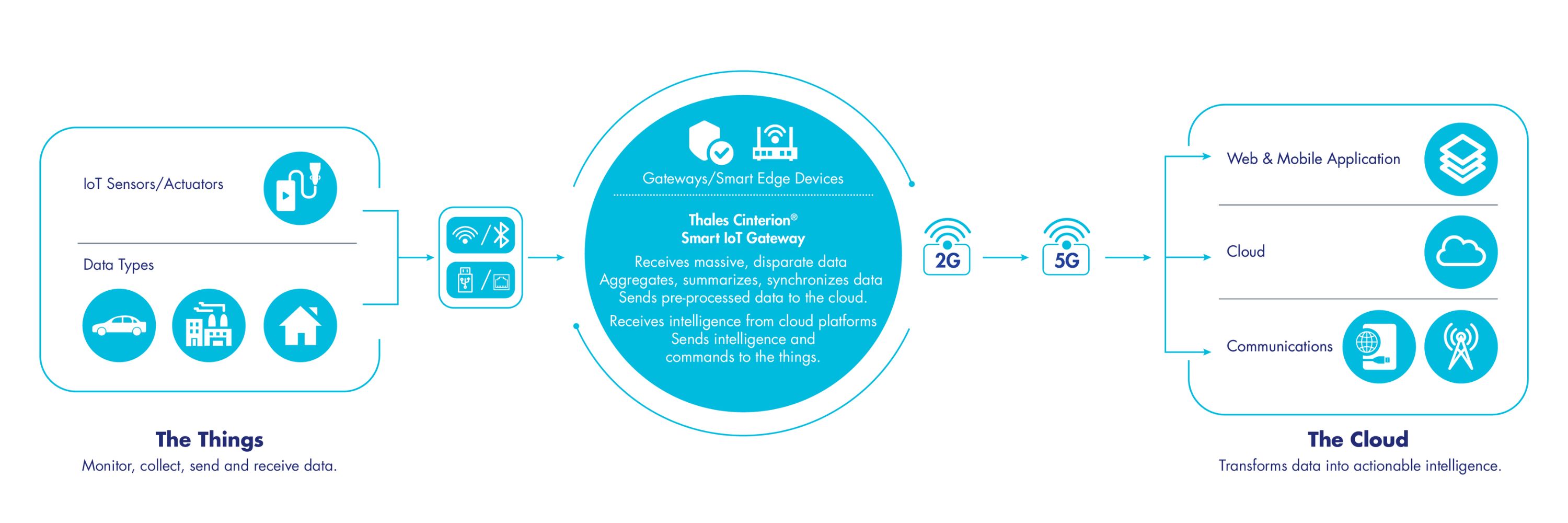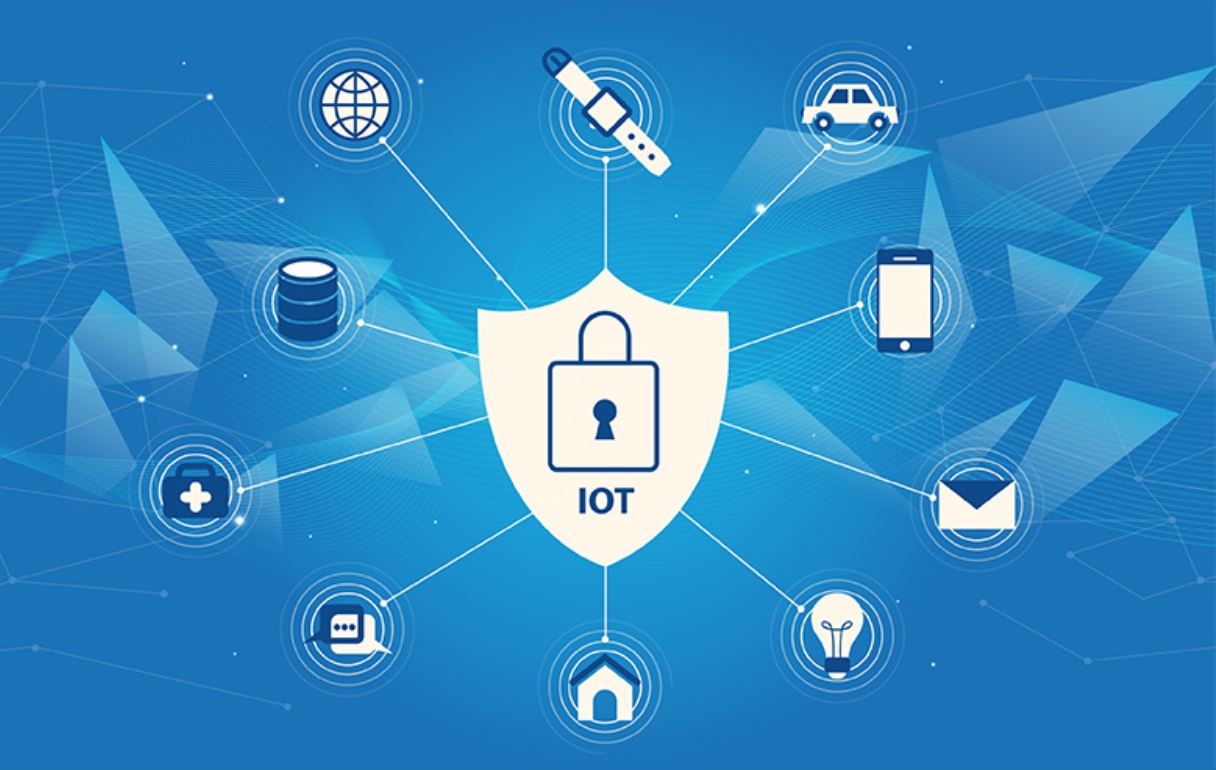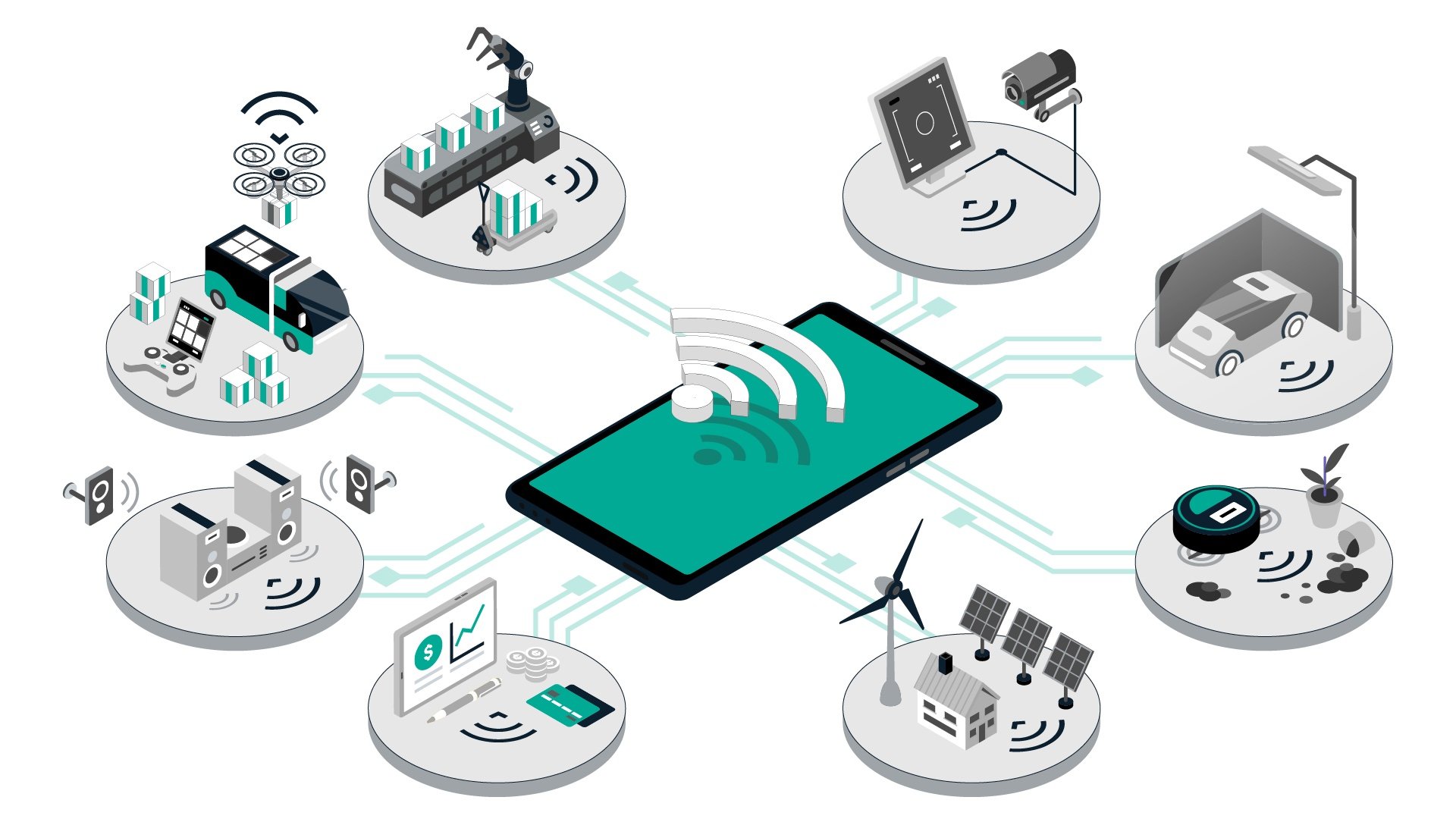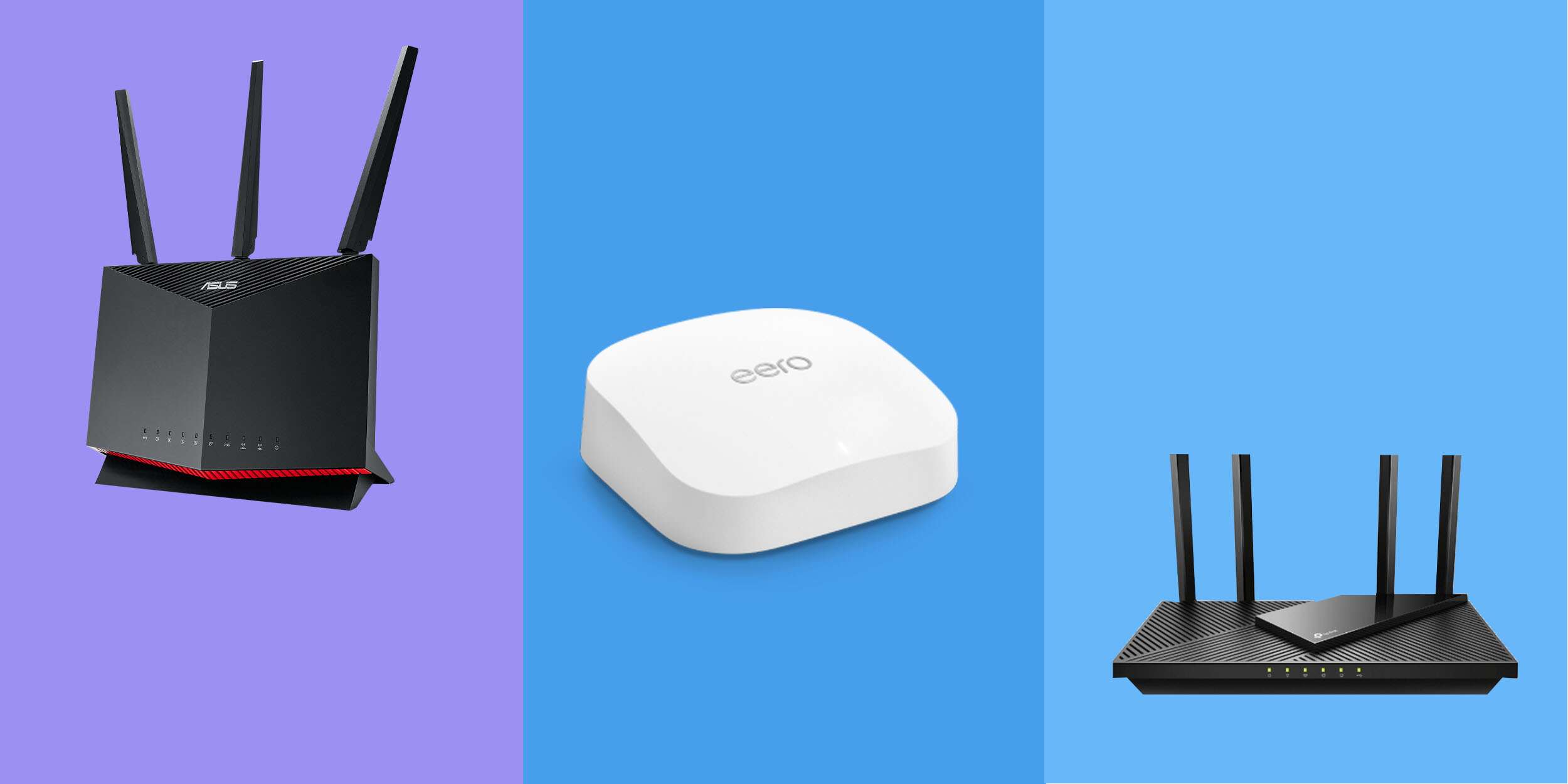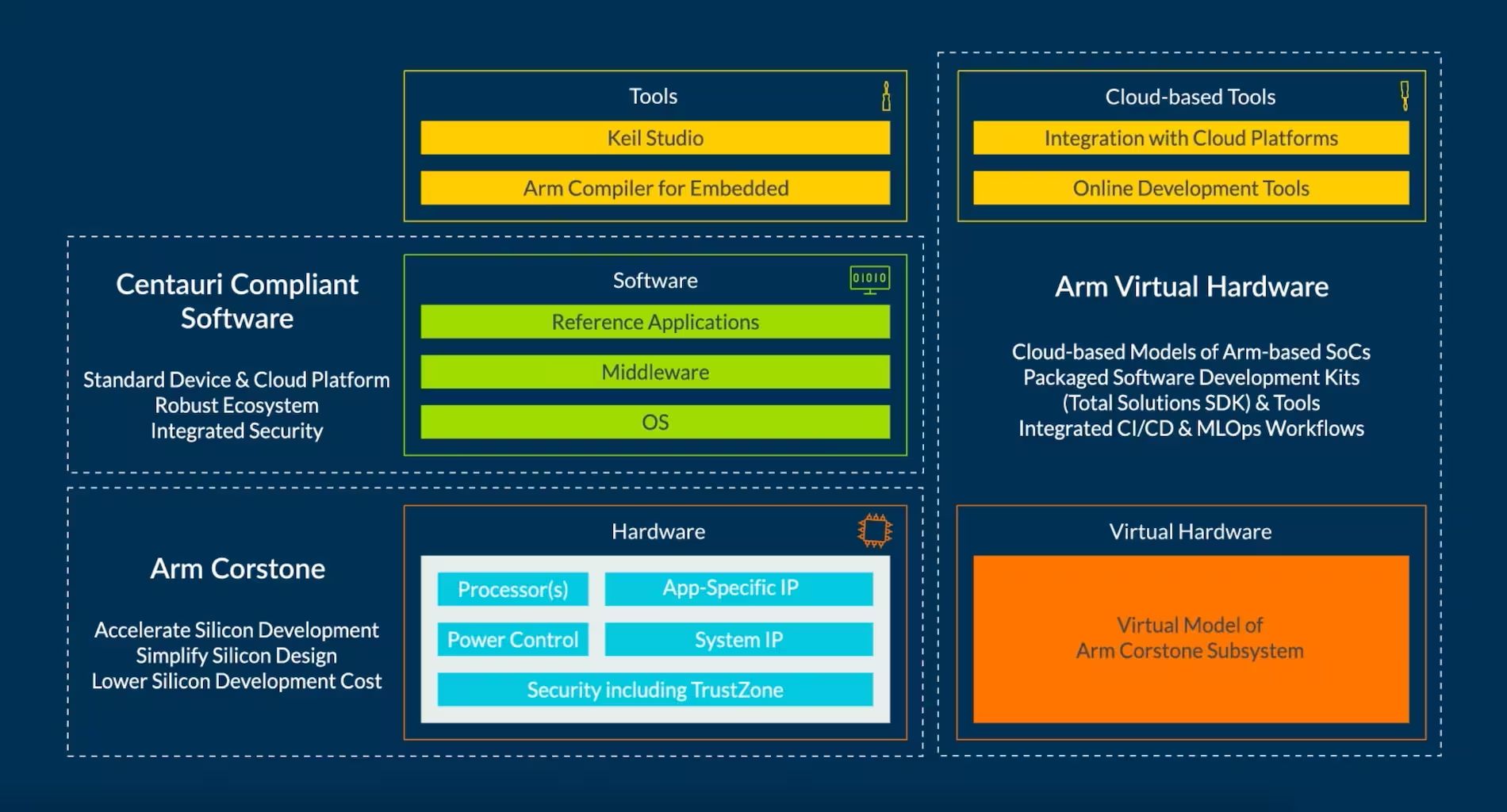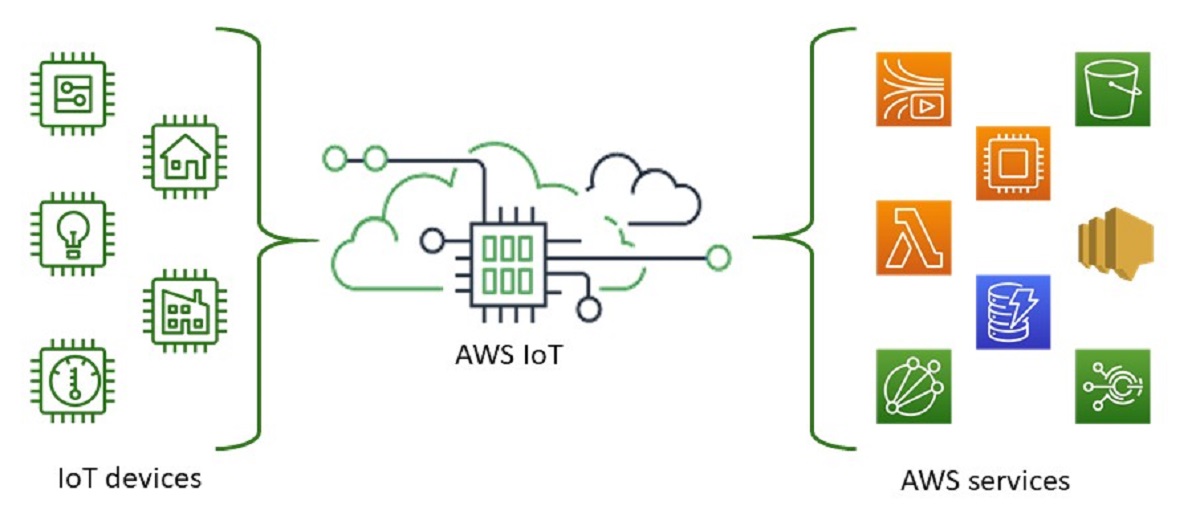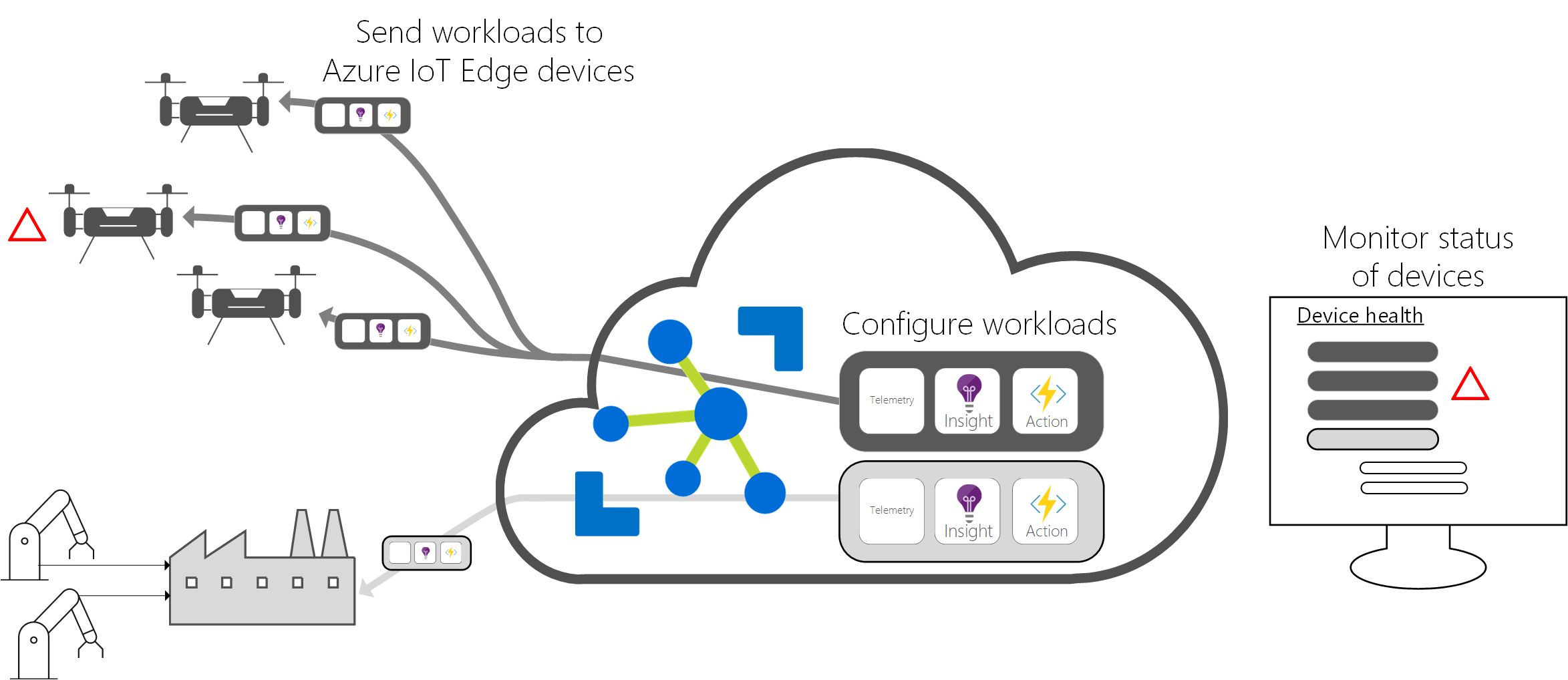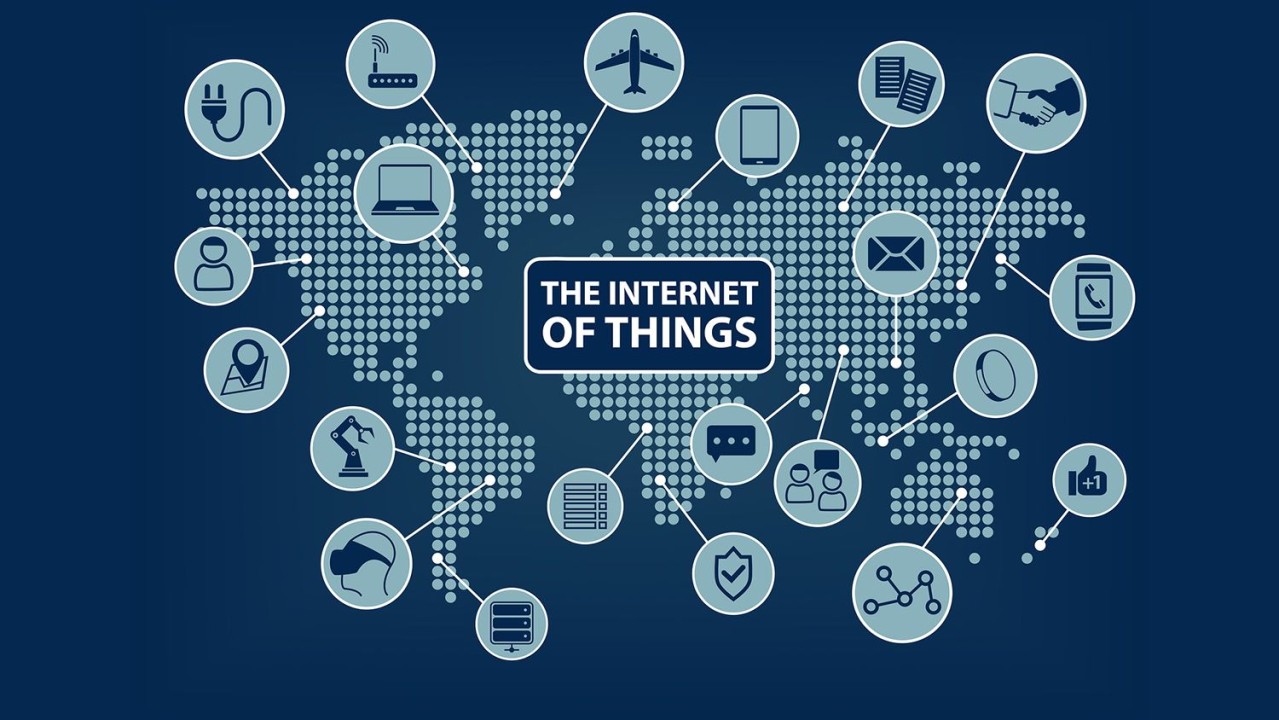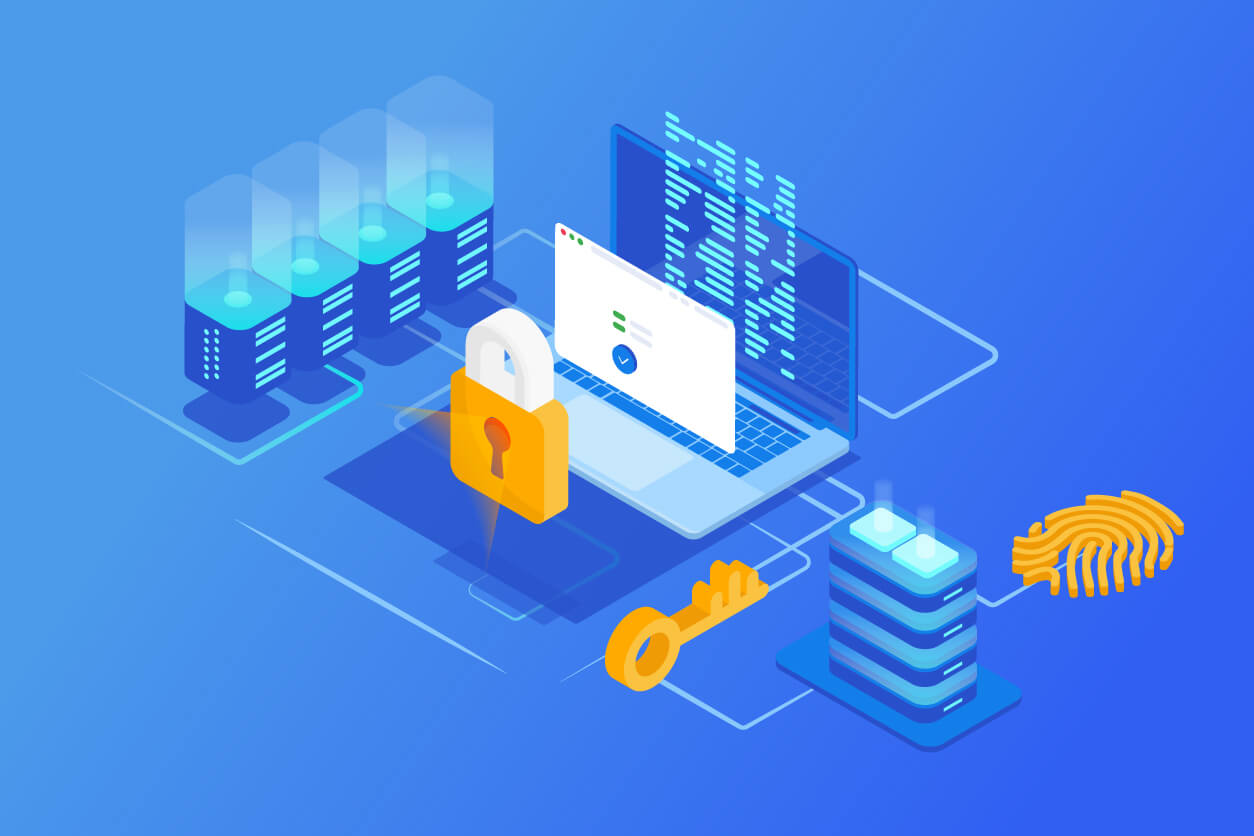Introduction
The Internet of Things (IoT) has revolutionized the way we interact with technology and has significantly impacted various industries. With the increasing number of connected devices and the need for seamless data communication between them, the role of IoT gateways has become crucial. In this article, we will explore the concept of IoT gateways, their functions, benefits, and considerations when choosing one.
IoT gateways play a vital role in bridging the gap between the IoT devices and the cloud or external networks. They act as intermediaries, facilitating secure and efficient communication between the devices and the central systems. These gateways not only provide the connectivity but also perform data filtering, protocol translation, and device management.
As the IoT ecosystem continues to grow rapidly, the need for IoT gateways has become even more evident. Without them, the massive amounts of data generated by IoT devices would overwhelm the networks and hinder efficient data analysis. Additionally, IoT gateways enable local processing and decision-making, reducing the dependence on cloud connectivity and enhancing response times.
IoT gateways are designed to handle the diverse range of communication protocols used by different IoT devices. They can support protocols such as Bluetooth, Wi-Fi, Zigbee, Z-Wave, and many more. By providing protocol translation capabilities, IoT gateways ensure that devices using different protocols can seamlessly communicate with each other and with the central systems.
Furthermore, IoT gateways offer a level of security by serving as a firewall between the devices and the external networks. They can enforce security policies, authenticate devices, and encrypt data transmissions, ensuring that the IoT ecosystem remains protected from potential cyber threats.
When choosing an IoT gateway, several factors need to be considered, such as scalability, interoperability, security features, power consumption, and integration capabilities. It is crucial to select a gateway that can meet the specific requirements of your IoT deployment and align with your long-term goals.
In the next sections of this article, we will delve deeper into the functions and key components of IoT gateways, explore the various types available in the market, discuss the benefits they offer, and provide insights into popular IoT gateway platforms and providers.
Definition of an IoT Gateway
An IoT gateway, also known as a device or edge gateway, is a hardware or software component that serves as a bridge between IoT devices and the central systems or cloud platforms. It acts as a communication hub, enabling seamless data exchange and management in the IoT ecosystem.
The primary function of an IoT gateway is to collect, aggregate, and filter data from connected devices before transmitting it to the cloud or external networks. It serves as an intermediary, coordinating the flow of information between the devices and the central systems, ensuring efficient and secure communication.
IoT gateways are responsible for protocol translation, as different IoT devices may use different communication protocols. They convert the diverse protocols into a standardized format, enabling interoperability and seamless communication between devices using different protocols. This protocol translation ensures that data from various devices can be understood and processed by the central systems without any issues.
In addition to protocol translation, IoT gateways also perform data filtering and preprocessing. They can filter out unwanted or irrelevant data at the edge, reducing the amount of data that needs to be transmitted to the cloud. This helps optimize bandwidth usage and reduces latency in data processing. Gateways can also perform basic data analytics and computations locally, enabling real-time decision-making and reducing reliance on cloud connectivity.
Furthermore, IoT gateways provide device management capabilities, allowing administrators to monitor and control connected devices remotely. They enable tasks such as software updates, firmware upgrades, and configuration changes to be performed centrally, ensuring the smooth operation of the IoT ecosystem.
Security is a critical aspect of IoT gateways. They serve as a firewall between the IoT devices and the external networks, protecting the system from potential cyber threats. Gateways enforce security measures such as device authentication, encryption of data transmissions, and implementation of security policies to safeguard the IoT ecosystem.
In summary, an IoT gateway is a crucial component in the IoT ecosystem that acts as a communication bridge between IoT devices and central systems. It collects, filters, and preprocesses data, performs protocol translation, enables device management, and ensures the security of the IoT infrastructure.
Why Do We Need IoT Gateways?
IoT gateways play a vital role in enabling the effective implementation and management of IoT deployments. They provide numerous benefits and address specific challenges that arise in the IoT ecosystem. Let’s explore some key reasons why we need IoT gateways:
1. Connectivity and Communication: IoT devices often use different communication protocols and standards. IoT gateways act as intermediaries, enabling seamless communication and data exchange between devices using different protocols. They bridge the gap between devices and central systems or cloud platforms, ensuring efficient connectivity.
2. Protocol Translation: IoT gateways facilitate protocol translation, allowing devices using different protocols to communicate with each other and with the central systems. This ensures interoperability and eliminates the need for each device to support multiple protocols.
3. Data Filtering and Preprocessing: IoT devices generate a massive amount of data, which can overwhelm networks and cloud platforms if transmitted without filtering. IoT gateways perform data filtering at the edge, reducing the data volume transferred to the cloud. This optimization minimizes bandwidth usage, reduces latency, and improves overall system performance.
4. Local Processing and Decision-Making: IoT gateways enable local processing and real-time decision-making. By performing data analytics and computations at the edge, gateways reduce dependence on cloud connectivity. This capability enhances response times, improves system reliability, and enables faster action in time-sensitive IoT applications.
5. Device Management: IoT gateways provide centralized device management capabilities. Administrators can remotely monitor, control, and update connected devices through the gateway. This simplifies the management and maintenance of IoT deployments and ensures the smooth operation of the entire system.
6. Security: IoT gateways act as a security layer, protecting the IoT ecosystem from potential cyber threats. They enforce security measures such as device authentication, data encryption, and implementation of security policies. Gateways play a vital role in maintaining the integrity and confidentiality of data exchanged between devices and external networks.
7. Scalability and Flexibility: IoT gateways enable the scalability and flexibility of IoT deployments. They can accommodate a growing number of connected devices and handle increasing data traffic. Gateways can also support various deployment scenarios, including edge computing, fog computing, or hybrid architectures, depending on the specific requirements of the IoT project.
Overall, IoT gateways are essential for connecting, managing, and securing IoT devices. They facilitate seamless communication, enable local processing, improve system performance, and ensure the scalability and flexibility of IoT deployments. By addressing these critical aspects, IoT gateways play a vital role in the successful implementation of robust and efficient IoT ecosystems.
Functions of an IoT Gateway
IoT gateways perform several key functions that are essential for the smooth operation and management of IoT deployments. Let’s explore some of the primary functions of an IoT gateway:
1. Connectivity: One of the key functions of an IoT gateway is to establish and maintain connectivity between IoT devices and the central systems or cloud platforms. It serves as a communication bridge, facilitating seamless data exchange and interaction between devices and external networks.
2. Protocol Translation: IoT devices often use different communication protocols and standards. An IoT gateway acts as a translator, converting data from various protocols into a standardized format. This enables interoperability and ensures that devices using different protocols can communicate with each other and with the central systems.
3. Data Filtering and Preprocessing: IoT gateways play a crucial role in filtering and preprocessing data at the edge. They can filter out unnecessary or irrelevant data before transmitting it to the cloud or external networks. This reduces the volume of data transferred and optimizes bandwidth usage, improving overall system performance.
4. Local Processing: IoT gateways have the capability to perform local processing and data analytics. By processing data at the edge, gateways can provide real-time insights and enable faster decision-making. This reduces the reliance on cloud connectivity, enhances response times, and enables time-sensitive applications.
5. Device Management: IoT gateways offer device management capabilities, allowing administrators to monitor, control, and manage connected devices remotely. They enable tasks such as firmware updates, software configuration, and device authentication. This centralized management simplifies the maintenance and operation of IoT deployments.
6. Security: Security is a crucial function of an IoT gateway. It serves as a firewall, protecting the IoT ecosystem from potential cyber threats. Gateways implement security measures such as device authentication, data encryption, and secure data transmission protocols. They ensure the integrity and confidentiality of data exchanged between devices and the central systems.
7. Edge Computing: IoT gateways enable edge computing, where data processing and analytics occur at the edge of the network. This reduces latency, minimizes the need for constant cloud connectivity, and enables real-time response in time-critical applications. Gateways can perform local computations, allowing for faster and more efficient data analysis.
8. Scalability and Flexibility: IoT gateways provide the flexibility and scalability required for IoT deployments. They can accommodate a growing number of connected devices and handle increasing data traffic. Gateways also support various deployment scenarios, such as edge computing or fog computing, depending on the specific requirements of the IoT project.
These functions of an IoT gateway are essential for establishing connectivity, enabling data exchange, ensuring security, and facilitating efficient management of IoT deployments. By performing these functions, IoT gateways contribute to the overall success and effectiveness of IoT ecosystems.
Key Components of an IoT Gateway
An IoT gateway is composed of several key components that work together to facilitate the seamless and secure communication between IoT devices and the central systems. Let’s explore the essential components of an IoT gateway:
1. Processing Unit: The processing unit is the core component of an IoT gateway and is responsible for performing the necessary computations and data processing. It can be a microcontroller, a microprocessor, or even a dedicated system-on-chip (SoC). The processing unit handles tasks such as protocol translation, data filtering, local data analytics, and device management.
2. Connectivity Interfaces: IoT gateways require various connectivity interfaces to establish communication with IoT devices and external networks. These interfaces can include Wi-Fi, Ethernet, Bluetooth, Zigbee, cellular, and others, depending on the specific requirements of the IoT deployment. The connectivity interfaces allow the gateway to connect and communicate with a wide range of IoT devices using different communication protocols.
3. Memory: An IoT gateway needs sufficient memory capacity to store and process data efficiently. It typically includes both volatile and non-volatile memory. Volatile memory, such as RAM, is used for temporary data storage and processing, while non-volatile memory, such as flash memory, is used for storing configurations, firmware, and other essential data.
4. Security Features: Security is a crucial aspect of IoT gateways, and they include specific components and features to ensure the integrity and confidentiality of data. These components include hardware security modules, secure elements, cryptographic accelerators, and encryption capabilities. The security features enable device authentication, data encryption, and secure communication between the gateway and IoT devices.
5. Operating System and Software: An IoT gateway runs an operating system that provides the necessary software infrastructure for managing the gateway’s functionalities. The choice of operating system depends on various factors such as processing power, resource requirements, and specific application needs. Additionally, IoT gateway software includes middleware, drivers, and application-specific software components.
6. User Interface: Many IoT gateways include a user interface that allows administrators to monitor and manage the gateway and connected devices. The user interface can be in the form of a web-based dashboard, a mobile application, or a command-line interface. It provides access to configuration settings, device management features, and real-time monitoring of the IoT deployment.
7. Power Supply: IoT gateways need a stable and reliable power supply to ensure uninterrupted operation. The power supply component can include AC/DC adapters, batteries, or even power over Ethernet (PoE) capabilities. The choice of power supply depends on the specific deployment requirements, such as usage environment and available power sources.
These key components work together to enable the connectivity, processing, security, and management functionalities of an IoT gateway. By combining these components, IoT gateways facilitate seamless communication, enhance data processing capabilities, and ensure the overall efficiency and effectiveness of IoT deployments.
Types of IoT Gateways
IoT gateways come in various types, each designed to cater to specific IoT deployment scenarios and requirements. Let’s explore some of the common types of IoT gateways:
1. Edge Gateways: Edge gateways, also known as local gateways, are deployed at the edge of the network, closer to the IoT devices. These gateways perform data processing, protocol translation, and filtering at the edge, reducing latency and dependence on the cloud. Edge gateways are ideal for applications that require real-time response and local decision-making.
2. Cloud Gateways: Cloud gateways, also called cloud-to-cloud gateways, facilitate communication between IoT devices and cloud platforms. They transmit data from IoT devices to the designated cloud services for storage, analysis, and further processing. Cloud gateways are ideal for applications where extensive data analytics and cloud-based services are required.
3. Fog Gateways: Fog gateways, also known as fog-to-cloud gateways, are deployed at the edge of the network, similar to edge gateways. However, fog gateways have more processing power and storage capabilities than edge gateways. They perform local data processing and analysis while also aggregating and forwarding data to the cloud. Fog gateways are suitable for applications that require a combination of local processing and cloud connectivity.
4. Wireless Gateways: Wireless gateways are designed specifically to connect wireless IoT devices using technologies such as Wi-Fi, Bluetooth, Zigbee, or Cellular networks. These gateways provide the necessary connectivity and protocol translation capabilities to bridge the communication gap between wireless devices and the central systems.
5. Industrial Gateways: Industrial gateways are built to withstand harsh environments and operate reliably in industrial settings. They are designed with robust hardware and software features, ensuring high performance, scalability, and compatibility with industrial protocols such as Modbus or Profibus. Industrial gateways connect industrial IoT devices to the central systems for efficient data management.
6. Multi-Protocol Gateways: Multi-protocol gateways support multiple communication protocols and standards, allowing devices using different protocols to connect and communicate seamlessly. These gateways are versatile and can handle diverse IoT device ecosystems, simplifying integration and interoperability challenges.
7. Hybrid Gateways: Hybrid gateways combine edge computing capabilities with cloud connectivity. They offer the flexibility to perform local processing and decision-making while also leveraging cloud resources for extensive data analysis and storage. Hybrid gateways are suitable for applications that require a balance between edge and cloud-based functionalities.
These are just a few examples of the types of IoT gateways available in the market. Selecting the right type of gateway depends on various factors, including the deployment scenario, connectivity requirements, processing needs, and specific IoT application demands.
Benefits of Using an IoT Gateway
IoT gateways offer numerous benefits that contribute to the successful implementation and management of IoT deployments. Let’s explore some of the key advantages of using an IoT gateway:
1. Simplified Connectivity: IoT gateways provide a simplified approach to connectivity by acting as intermediaries between IoT devices and the central systems or cloud platforms. They handle the complexities of communication protocols, ensuring seamless data exchange between devices and external networks.
2. Protocol Translation and Interoperability: IoT devices often utilize different communication protocols and standards. An IoT gateway performs protocol translation, enabling devices using different protocols to communicate with each other and with the central systems. This ensures interoperability and simplifies integration challenges.
3. Local Data Filtering and Preprocessing: IoT gateways have the capability to filter and preprocess data at the edge of the network. This reduces the amount of data transferred to the cloud, optimizing bandwidth usage and improving overall system performance. Local data filtering also enables real-time decision making and reduces reliance on constant cloud connectivity.
4. Enhanced Security: IoT gateways play a vital role in ensuring the security of IoT deployments. They act as a security layer, implementing measures such as device authentication, data encryption, and secure data transmission protocols. Gateways provide a secure interface between devices and external networks, protecting the IoT ecosystem from potential cyber threats.
5. Local Processing and Edge Computing: By performing local processing and edge computing, IoT gateways enable faster response times and reduce latency in data processing. Gateways can analyze, compute, and make decisions locally, allowing for real-time actions and reducing reliance on cloud connectivity. Edge computing capabilities also enable offline operations, ensuring uninterrupted functionality even in instances of connectivity loss.
6. Device Management: IoT gateways offer centralized device management capabilities, allowing administrators to monitor, control, and manage connected devices. This simplifies tasks such as firmware updates, software configuration, and device maintenance. Gateways enable efficient device management, improving the overall stability and reliability of IoT deployments.
7. Scalability and Flexibility: IoT gateways are designed to handle the scalability and flexibility requirements of IoT deployments. They can accommodate a growing number of connected devices and handle increasing data traffic. Gateways also support various deployment scenarios, such as edge computing, fog computing, or hybrid architectures, providing flexibility and adaptability to diverse IoT projects.
By leveraging the benefits of IoT gateways, organizations can enhance connectivity, ensure interoperability, improve security, enable local data processing, and simplify device management in their IoT deployments. These advantages contribute to the overall efficiency, reliability, and success of IoT ecosystems.
Considerations When Choosing an IoT Gateway
Choosing the right IoT gateway is crucial for the success of your IoT deployment. Several factors need to be considered to ensure that the selected gateway aligns with your project requirements and long-term goals. Let’s explore some key considerations when choosing an IoT gateway:
1. Connectivity Requirements: Assess the connectivity needs of your IoT devices and ensure that the gateway supports the required communication protocols, such as Wi-Fi, Bluetooth, Zigbee, or Cellular. The gateway should have the necessary connectivity interfaces to connect and communicate with the devices in your IoT ecosystem.
2. Scalability and Compatibility: Consider the scalability of the gateway and evaluate if it can handle the anticipated growth of your IoT deployment. Additionally, ensure that the gateway is compatible with your existing infrastructure, devices, and the central systems or cloud platforms you plan to use.
3. Security Features: Security is of paramount importance in IoT deployments. Evaluate the security features offered by the gateway, such as device authentication, data encryption, and secure transmission protocols. Choose a gateway that provides robust security measures to protect your IoT ecosystem from potential cyber threats.
4. Processing Power and Edge Computing Capabilities: Assess the processing power and storage capabilities of the gateway. Consider whether it can handle the required data processing, protocol translation, and local analytics. If edge computing is a crucial requirement in your IoT deployment, ensure that the gateway has the necessary computing capabilities to perform tasks at the edge of the network.
5. Integration and Interoperability: Evaluate the gateway’s integration capabilities and its ability to work with other devices, protocols, and systems. Consider the ease of integration and the gateway’s support for interoperability standards to ensure smooth communication between devices and external networks.
6. Management and Monitoring: Consider the management and monitoring capabilities of the gateway. Assess whether it provides a user-friendly interface or platform that allows for centralized device management, firmware updates, and monitoring of connected devices and their performance.
7. Power Consumption: Evaluate the power consumption characteristics of the gateway. Consider the power requirements and sources available in your IoT deployment environment. Choose a gateway that aligns with your power supply options and ensures efficient power usage.
8. Support and Vendor Reputation: Assess the support provided by the gateway vendor. Ensure that they offer timely technical support, firmware updates, and ongoing maintenance. Additionally, consider the reputation and reliability of the vendor in the IoT industry.
By carefully considering these factors, you can make an informed decision when selecting an IoT gateway. Choosing the right gateway will ensure efficient connectivity, seamless communication, robust security, and smooth management of your IoT deployment.
Popular IoT Gateway Platforms and Providers
When it comes to IoT gateways, several platforms and providers offer reliable and feature-rich solutions. These platforms provide a wide range of functionalities to support diverse IoT deployments. Let’s explore some popular IoT gateway platforms and providers:
1. Azure IoT Edge: Azure IoT Edge is a widely-used platform by Microsoft that brings cloud capabilities to the edge of the IoT network. It enables edge computing, local analytics, and machine learning capabilities. It supports various programming languages and offers integration with Microsoft Azure cloud services.
2. AWS IoT Greengrass: Developed by Amazon Web Services (AWS), AWS IoT Greengrass provides a software platform for local data processing and management in IoT environments. It offers features like edge computing, offline operations, and message routing. AWS IoT Greengrass provides seamless integration with other AWS services.
3. Google Cloud IoT Core: Google Cloud IoT Core is a robust and scalable platform for securely connecting, managing, and ingesting data from IoT devices. It offers features like device management, telemetry analysis, and integration with other Google Cloud services. Google Cloud IoT Core provides easy integration with the broader Google Cloud ecosystem.
4. IBM Watson IoT Platform: IBM Watson IoT Platform is a comprehensive platform that enables secure and scalable connectivity for IoT devices. It offers features like device management, real-time analytics, and cognitive capabilities. The platform integrates well with other IBM Watson services, enabling advanced data analysis and insights.
5. Cisco IoT Gateway: Cisco is a prominent provider of IoT solutions, including IoT gateways. Their gateway offerings provide reliable connectivity, security, and edge computing capabilities. Cisco IoT gateways are known for their scalability, interoperability, and integration with Cisco’s broader networking and security infrastructure.
6. Dell IoT Gateway: Dell offers a range of IoT gateways designed for different deployment scenarios. Their gateway solutions provide reliable and secure connectivity, edge processing capabilities, and compatibility with various IoT devices and protocols. Dell gateways are known for their robust hardware and integration with Dell’s broader IoT and edge computing ecosystem.
7. Intel IoT Gateway: Intel provides a range of IoT gateway solutions tailored for industrial and commercial IoT applications. Their gateways offer processing power, connectivity interfaces, and security features. Intel IoT gateways are known for their performance, reliability, and compatibility with Intel’s IoT and edge computing technologies.
8. Siemens IoT Gateway: Siemens offers IoT gateway solutions that focus on industrial IoT deployments. Their gateways provide connectivity, edge processing capabilities, and integration with Siemens’ industrial automation and control systems. Siemens IoT gateways are known for their robustness, scalability, and compatibility with industrial protocols.
These are just a few examples of popular IoT gateway platforms and providers in the market. When choosing a platform or provider, consider the specific requirements of your IoT deployment, such as connectivity needs, edge computing capabilities, scalability, security features, and integration with existing systems. Evaluating the strengths and capabilities of different platforms and providers will help you make an informed decision for your IoT gateway selection.
Conclusion
IoT gateways play a crucial role in the successful implementation and management of IoT deployments. They provide connectivity, protocol translation, data filtering, local processing, security, and device management capabilities. By acting as intermediaries between IoT devices and central systems or cloud platforms, IoT gateways ensure seamless and secure communication within the IoT ecosystem.
In this article, we explored the definition and functions of IoT gateways, highlighting their significance in bridging the gap between devices and external networks. We discussed the key components of an IoT gateway, including the processing unit, connectivity interfaces, memory, security features, operating system, user interface, and power supply.
We also delved into the various types of IoT gateways, such as edge gateways, cloud gateways, fog gateways, wireless gateways, industrial gateways, multi-protocol gateways, and hybrid gateways. Each type offers specific functionalities tailored to different IoT deployment scenarios and requirements.
Furthermore, we examined the benefits of using an IoT gateway, including simplified connectivity, protocol translation, local data filtering and preprocessing, enhanced security, local processing and edge computing, device management, and scalability and flexibility.
Lastly, we explored popular IoT gateway platforms and providers, such as Azure IoT Edge, AWS IoT Greengrass, Google Cloud IoT Core, IBM Watson IoT Platform, Cisco IoT Gateway, Dell IoT Gateway, Intel IoT Gateway, and Siemens IoT Gateway. These platforms and providers offer comprehensive solutions for IoT deployments, catering to a wide range of needs and requirements.
Choosing the right IoT gateway requires considering factors such as connectivity requirements, scalability, security features, processing power, integration capabilities, power consumption, and support. Making an informed decision will ensure efficient connectivity, seamless communication, robust security, and smooth management of your IoT deployment.
In conclusion, IoT gateways are critical components in the IoT ecosystem, enabling connectivity, data exchange, security, and management. They empower organizations to leverage the full potential of IoT by enhancing communication, enabling local processing, optimizing data transmission, and ensuring the scalability and flexibility of their IoT deployments.







